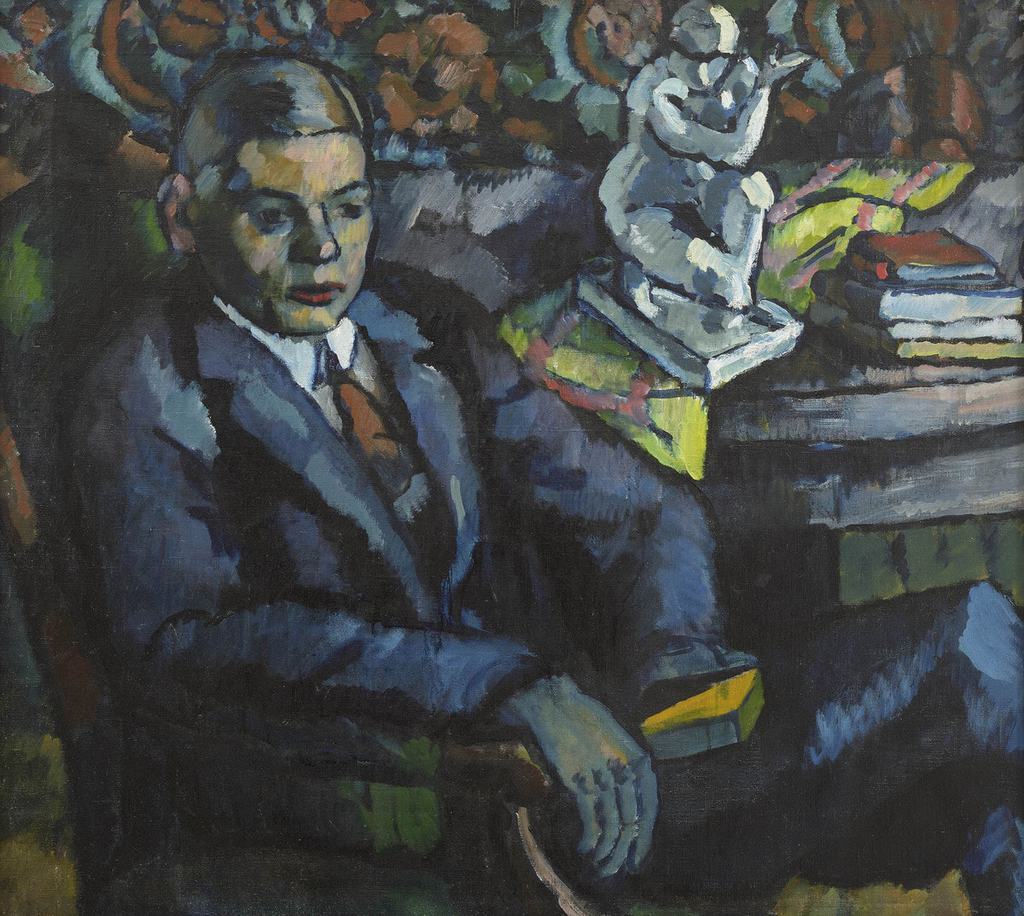
Villem Ormisson has depicted his younger brother Karl – a restless man with a searching spirit, who already fought in the War of Independence as a volunteer at the age of 17. He later tried to study in different disciplines at various universities in different countries, which ultimately proved to be so costly that the wealthy Ormisson family went bankrupt (they had to give up their luxury hotel in Viljandi). For this reason, the brothers did not get along with each other very well, yet this portrait was apparently painted before the start of those dramatic events.
Ormisson has indicated several references to the distinct features of his younger brother in the range of the painting’s literary motif – the stack of books on the table refers to his intellectual capacities, his elegant suit and languid pose refer to a certain foppishness and tendency to play the big spender. The yellow triangle at the end of the suit jacket’s left sleeve that replaces the fingers is strange – its meaning has not been explained to this day. The carpet with variegated ornamentation that is situated in the background stands out immediately from a painterly aspect. This is a device that was used quite frequently in Estonian painting in the first half of the 20th century to create the opportunity to build a multi-coloured environment in portraits. Ormisson’s paragon Konrad Mägi, for example, often used similar arabesque textiles in his portraits. The white plaster figure placed on the table similarly stands out – this is an element that Ormisson also used in several other paintings, including the work Natüürmort lilledega aknal [Still-Life with Flowers at a Window]. On the one hand, it adds dynamic tension. In addition to his brother’s relaxed pose, there is now another figure on the painting’s surface, the position of which refers to a controlled, arranged state, even a certain poetry. The light tone of the plaster figure helps to stress the artist’s decision to place the picture’s right-hand corner in a patch of light: evidently the light coming from the window has made that part of the surface of the painting considerably lighter, among other things making the colourful runner placed on the table beneath the plaster figure gleam.